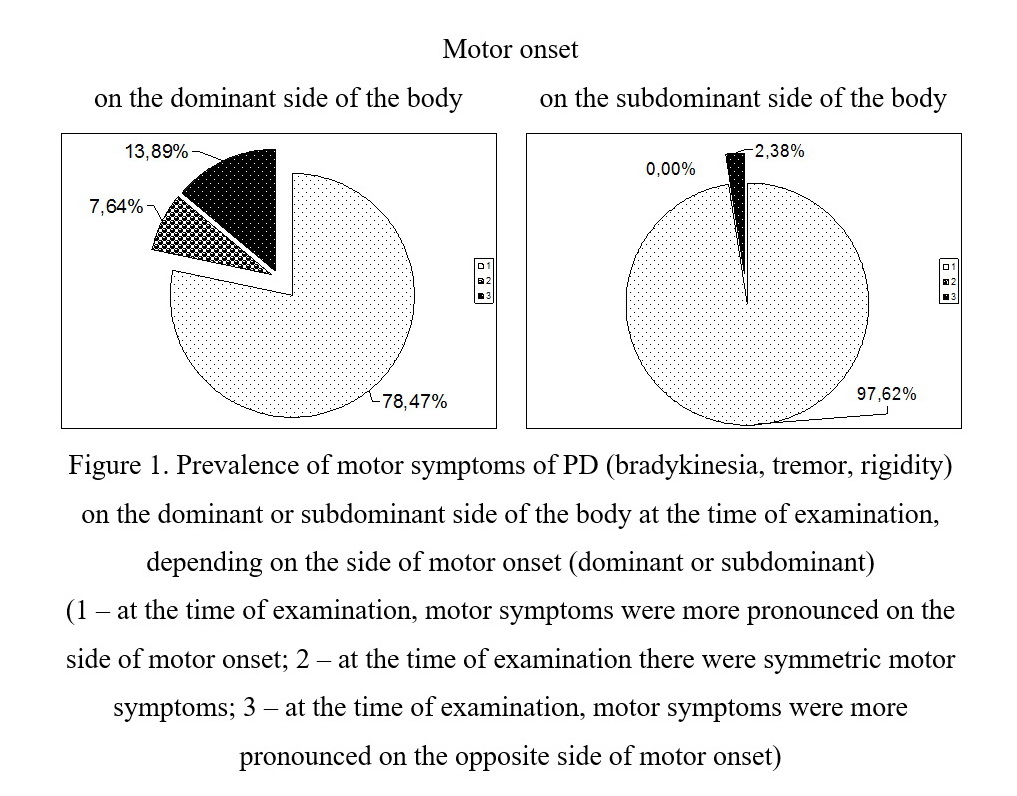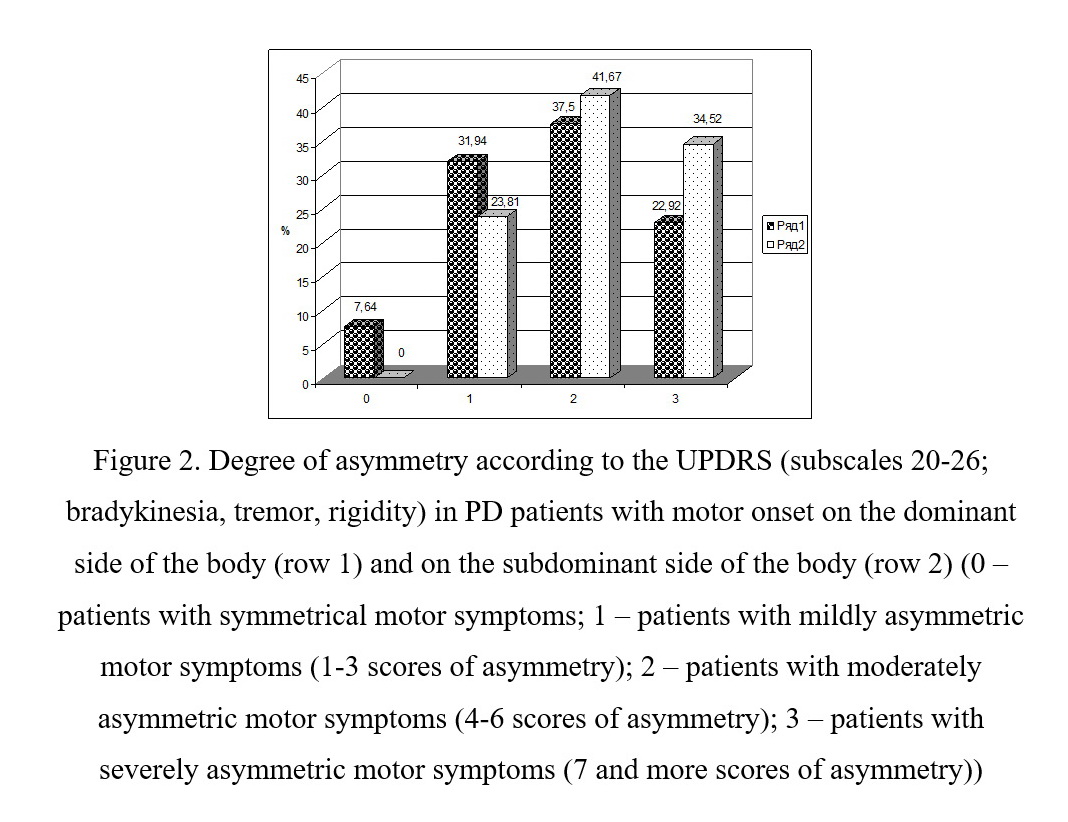Session Information
Date: Monday, September 23, 2019
Session Title: Clinical Trials, Pharmacology and Treatment
Session Time: 1:45pm-3:15pm
Location: Agora 3 West, Level 3
Objective: The objective of our research was to study the relationship between the motor onset and the asymmetry of motor symptoms in patients with Parkinson’s Disease (PD).
Background: Typical onset of idiopathic PD is characterised by insidious onset, generally in one limb, spreading over 2-5 years to become bilateral [1]. If some researchers point out that there is most often PD onset on the dominant side of the body, other researchers argue that there is no such dependence.
Method: 230 consecutive patients with idiopathic PD (151 males and 79 females, age range from 35 to 88) were questioned at time of routine clinic visits. Average duration of PD was 8.11 ± 0.39 years.
Results: 213 of our PD patients were right-handed, 16 patients were left-handed, and it was not possible to identify the dominant side of the body in two cases. We made an interesting observation. At the time of examination from 144 PD patients with motor onset on the dominant side of the body, 113 (78.47%) patients had motor symptoms more pronounced on the dominant side, 11 (7.64%) patients had symmetric motor symptoms and 20 (13.89%) patients had motor symptoms more pronounced on the subdominant side. While, at the time of examination, from 84 PD patients with motor onset on the subdominant side of the body, 82 (97.62%) patients had motor symptoms more pronounced on the subdominant side, and 2 (2.38%) patients had motor symptoms more pronounced on the dominant side. Nobody in this group had symmetric motor symptoms (Fig. 1). [figure1]
Conclusion: There was more pronounced motor asymmetry in PD patients with motor onset on the subdominant side of the body as compared to PD patients with motor onset on the dominant side (p < 0.007) (Fig. 2). [figure2] The frequency of PD motor onset on the dominant side of the body was significantly exceeded than on the subdominant side (62.61% vs. 36.52%, p < 0.001).
References: 1. Brooks, D. J. (2002). Diagnosis and management of atypical parkinsonian syndromes. Journal of Neurology, Neurosurgery & Psychiatry, 72(suppl 1), i10-i16.
To cite this abstract in AMA style:
Y. Trufanov, N. Svyrydova, V. Svistun, I. Harkava, H. Bondarenko, N. Zhhilova. The relationship between the motor onset and the asymmetry of motor symptoms in patients with Parkinson’s Disease [abstract]. Mov Disord. 2019; 34 (suppl 2). https://www.mdsabstracts.org/abstract/the-relationship-between-the-motor-onset-and-the-asymmetry-of-motor-symptoms-in-patients-with-parkinsons-disease/. Accessed December 28, 2025.« Back to 2019 International Congress
MDS Abstracts - https://www.mdsabstracts.org/abstract/the-relationship-between-the-motor-onset-and-the-asymmetry-of-motor-symptoms-in-patients-with-parkinsons-disease/


